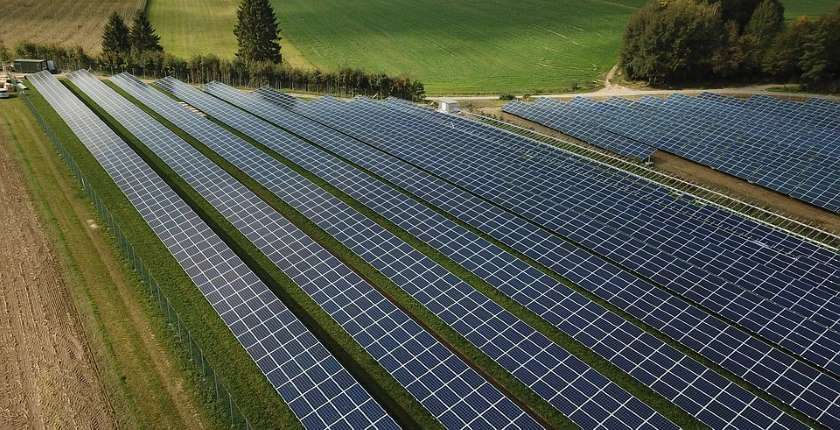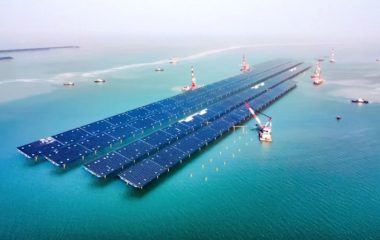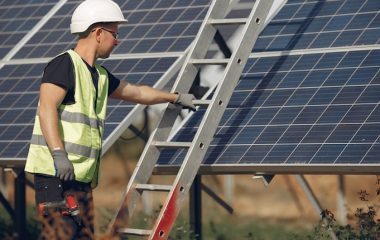
Photo: Fabersam on Pixabay
The EU gave a green light for Greece’s EUR 2.27 billion aid scheme for renewables. The first tender, for 600 MW, is planned for March, and 1 GW should be awarded overall in the auctions planned for 2022.
The European Commission has approved, under the European Union’s state aid rules, Greece’s support mechanism of EUR 2.27 billion for the production of electricity from renewable sources and high-efficiency combined heat and power (CHP) with a combined capacity of 4.2 GW.
According to the announcement, for both onshore wind and solar installations, the aid will be awarded through a joint competitive tendering procedure, organised to increase competition and reduce the cost of renewable energy for Greek consumers, both on the mainland and on the islands.
The capacity planned to be supported is estimated at 4.2 GW
If a minimum technology diversification is not attained out of the joint solar and onshore wind auctions, Greece reserves the possibility to launch separate auctions for onshore wind and solar to address the technology shortfall. The government plans also to finance projects abroad.
Support to the production of electricity from other renewable energy technologies will be directly awarded, subject to certain thresholds over which competitive tendering procedures will apply.
Two-way CfD premiums
With respect to support for electricity production that will be subject to an auction, the aid will take the form of a two-way contract-for-difference (CfD) premium. Under the model, where the electricity price is below a reference price established based on an auction, the state pays the renewable electricity producer the difference between the actual electricity price and the reference one.
On the other hand, where the electricity price is above the reference price, the electricity producer pays the state the difference between the actual electricity price and the reference one. This guarantees renewable energy producers long-term price stability, helping them to make the necessary investments, while limiting the cost for the state.
With respect to aid for support to electricity production from technologies exempted from auctions, a similar mechanism will apply, except that the reference value will be aligned with the production costs of the technology in question.
The scheme is open until 2025 and aid can be paid out for a maximum of 20 years.
First tender under new regime to take place in March
Based on the new renewables scheme, the first 600 MW mixed technology tender for wind and solar is expected to be announced before the end of this year in order to take place in March. Overall, 1 GW in renewable projects are expected to be awarded next year under the new regime.
What is important here is that in the case of an imbalance between wind and solar during the mixed tenders, the government maintains the right to proceed with separate tenders for each technology in order to ensure their growth according to the country’s 2030 goals.
Greece hasn’t used the option so far to finance projects outside of the country
Another significant aspect is the aforementioned mechanism, which ensures that if a project’s income from the sale of power in the market is higher than its remuneration, then the difference is returned to the state, regardless of its technology.
Concerning the possibility of Greece financing renewable projects abroad, it was already included in the previous scheme without ever being realized. In total, over 150 MW of such projects have to be included in future tenders in order to satisfy the EU. At the same time, the scheme allows foreign countries interconnected with Greece to invest in renewable projects in its territory.
Stricter licensing leads to a drop in new applications
This year, the country’s Regulatory Authority for Energy (RAE) decided to increase the amount necessary for the letter of guarantee for renewable applications to EUR 35,000 per MW in order to push down the enormous amount of licenses already accumulated. The result was that during October’s licensing round, 127 proposals were submitted for 960 MW in total, versus 743 and 17.45 GW in June.
Regardless, in recent days, the regulator approved new licenses for hundreds of megawatts in renewable projects with storage capacity. Ιntrakat’s projects in Thebes of 496.6 MW in total were greenlighted, and so were Akuo Energy’s 387 MW in Thessaly, Egnatia’s 144 MW and Abo Wind Hellas’s 100 MW.


















Be the first one to comment on this article.